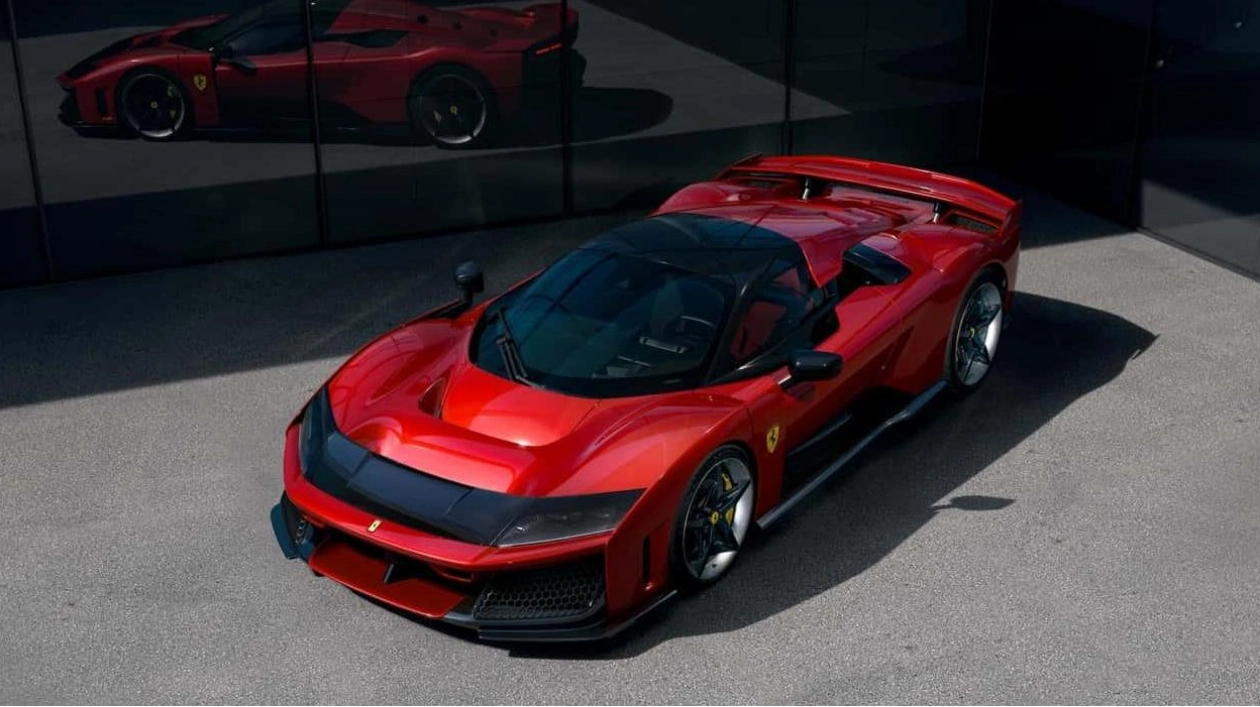Active suspension has long been a dream for vehicle dynamics engineers, and with the introduction of the Ferrari Purosangue last year, it finally became a reality in production cars. Porsche quickly followed suit with active suspension systems for the Panamera and Taycan. However, it is with Ferrari's latest hypercar that we will truly witness the full potential of this groundbreaking technology.
First, a brief overview of active suspension. Essentially, it is any system capable of applying force to a car's suspension independently of external inputs. It is important to note that this is different from adaptive systems, which may include features like adjustable ride height or dampers. Adaptive systems are reactive, responding only to inputs from the road or driver, whereas active suspension can exert force regardless of these factors.
The Ferrari system utilizes hardware developed by Canadian supplier Multimatic, specifically True Active Spool Valve (TASV) dampers. These dampers feature a 48-volt motor geared to a ball screw that controls the piston's motion. Each motor can apply up to 5 kilonewtons (1,120 pounds) of force into the damper almost instantaneously. This allows for the use of softer springs and eliminates the need for anti-roll bars, as the dampers alone control body motions. Essentially, this creates a suspension system where each wheel operates independently and allows for the complete decoupling of ride and handling characteristics between the left and right sides of the vehicle.
Such a system opens up a multitude of possibilities. For instance, it can optimize tire load independently through all phases of a corner, managing the center of aerodynamic pressure throughout. This is why it is particularly exciting to see this technology on the Ferrari F80, a car designed to fully exploit the benefits of active suspension.
While the other three active suspension production cars—the Ferrari Purosangue, Porsche Panamera, and Taycan—are impressive, they are heavy four-door vehicles that use active suspension to balance ride quality and performance. The Taycan Turbo GT, for example, is the most track-focused of these, weighing in at 4,925 pounds. In contrast, the F80, though not the lightest, boasts a dry weight of 3,362 pounds (likely closer to 3,500 pounds with fluids) and is a true hypercar with 1,200 horsepower from its hybrid, all-wheel-drive, mid-engine V-6 drivetrain. It also generates significant downforce, comparable to GT3 race cars.
With such substantial aerodynamic loads, maintaining the car's stability is crucial. Downforce, particularly that generated by diffusers, is highly sensitive to ride height. Lowering the car increases downforce, but there is a point where the suspension can bottom out, causing a stall in airflow and a rebound effect. This phenomenon, known as 'porpoising,' was observed in Formula 1 when the current ground-effect aero regulations were introduced in 2022.
The goal is to keep the car as flat and level as possible without bottoming out. Traditionally, this is achieved with very stiff springs and anti-roll bars, which is acceptable in race cars but not ideal for road cars. With active suspension, the car can be held perfectly level on the track while maintaining compliance on the road. However, Ferrari is likely to allow some body motion in the F80 to provide the driver with a sense of the car's dynamics, especially on the street.
The primary drawbacks of TASV dampers are cost and weight. While cost is negligible in a high-end car like the F80, the dampers require a 48-volt power supply and their own cooling circuit. This setup is heavier than conventional suspension, but Ferrari believes the trade-off is justified. Active suspension offers unparalleled control over vehicle dynamics and allows Ferrari to design the car without the need for anti-roll bars.
In Formula 1, active suspension proved to be a game-changer. The Williams FW14B, for example, was devastatingly effective during the 1992 season, with Nigel Mansell finishing first or second in all but four races (all retirements). The 1993 Williams FW15C was similarly dominant, leading to the ban of electronic driver aids, including active suspension, in 1994. To this day, active suspension remains banned in F1.
There is no more effective way to maximize a car's performance with immense power, downforce, and mechanical grip. It also ensures that the F80 will be comfortable as a street car. While this suspension system may not garner much attention beyond this, it is a crucial element that should make the F80 both incredibly fast and usable on the road.






